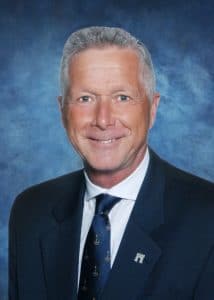 A number of years ago I was conducting a search for a client looking for an Operations Manager for one of their factories. As I toured the facility with the Plant Manager I asked him how he would describe his leadership style. Without any hesitation and with a rich German accent he replied succinctly “I turn winos and deadbeats into soldiers.”
A number of years ago I was conducting a search for a client looking for an Operations Manager for one of their factories. As I toured the facility with the Plant Manager I asked him how he would describe his leadership style. Without any hesitation and with a rich German accent he replied succinctly “I turn winos and deadbeats into soldiers.”
I have rarely met a leader who had such total clarity on his role and what he had to do to get it done successfully.
One of the main challenges we have in executive search is getting clarity from our clients on what EXACTLY they are looking for. Many say (in so many words) “I am not really sure what I am looking for, but I will recognize it when I see it.”
In our experience, 3 things need to come together in a successful placement. The candidate must have the right training or education, the right work experience, and the right soft traits (character and culture fit with the organization).
With some work you can get the first two right from the candidates’ resumes. What you can’t get is the character and fit. Consequently, companies have hired on the basis of the first two, and fired 6 months later on the basis of the last one.
Let’s unpack this a bit. The typical 3 page job description will cover 12-15 responsibilities (including “other tasks as required”), a list of desired certifications and years of experience, how much heavy lifting is required, and how much out of office time is involved. Word searches and other AI (Artificial Intelligence) tools can help HR departments identify candidates who look good on paper from LinkedIn, Indeed and other sites. It is then up to the busy hiring manager with limited professional interview training to pick a winner from the talent pageant, using intuition and gut feel.
A better way for your consideration would be to formalize your assessment process using the following 4 step method:
- Identify a finite number of critical outcomes (KPI’s or Key Performance Indicators) for the position which would clearly define success.
- Determine a similar number of desirable character traits you have identified from previously successful employees in the role which resulted in success.
- Use this information to develop a standard interviewing process, with questions designed to assess each candidate on the basis of these required outcomes, skills and traits.
- Create a scoring system to numerically measure each candidate who is interviewed.
A system like this has the following benefits:
- It will bring significant clarity as to what exactly you are looking for.
- It will replace intuition and gut feel with a quantifiable “goodness of fit”.
- It will provide a legally defensible assessment process which will help eliminate challenges based on alleged bias or discrimination.
With a bit of time well spent in advance, interviewing candidates doesn’t have to be tough, and you will certainly enjoy a higher success rate!
About the author: Bruce McAlpine is President of Fulcrum Search Science Inc., a Toronto-based executive search firm solving Mission-Critical hiring challenges throughout North America for 50 years. He is also a Past President of the Association of Canadian Search, Employment & Staffing Services and a Past President of the Royal Military Colleges Club of Canada. He can be reached at 416.779.8505 or bruce.mcalpine@fulcrumsearchscience.com .